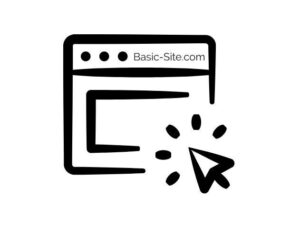
Search engine optimization (SEO) is crucial for increasing your WordPress website’s visibility, driving organic traffic, and improving search engine rankings.
As a beginner, mastering SEO might seem daunting, but with the right strategies, you can set up a solid foundation for your site. Here’s a comprehensive guide to essential SEO tips for WordPress beginners.
1. Choose an SEO-Friendly Theme
Your WordPress theme plays a significant role in your site’s SEO. An SEO-friendly theme ensures that your website loads quickly, is mobile-responsive, and is optimized for search engines. When choosing a theme, look for the following features:
- Responsive Design: A theme that looks great on all devices (mobile, tablet, desktop) is crucial since Google uses mobile-first indexing.
- Fast Loading Speed: A lightweight theme with clean code helps reduce load times, which is a ranking factor in Google’s algorithm.
- Schema Markup: Themes with built-in schema markup help search engines understand your content better, leading to enhanced visibility in search results.
Themes like Astra, GeneratePress, and OceanWP are popular choices that are known for their SEO-friendly designs.
2. Install an SEO Plugin
SEO plugins are essential tools that help you optimize your WordPress site easily. They offer a range of features, from meta tag management to XML sitemaps and content analysis. Two of the most popular SEO plugins are:
- Yoast SEO: This plugin provides on-page optimization features, such as keyword analysis, readability scores, and the ability to edit meta descriptions and titles directly in the post editor. It also generates XML sitemaps automatically.
- Rank Math: Known for its user-friendly interface, Rank Math offers advanced SEO analysis, keyword tracking, schema markup, and integration with Google Search Console.
Choose one of these plugins and configure it according to your site’s needs.
3. Optimize Your Permalink Structure
Permalinks are the URLs for your blog posts and pages. An SEO-friendly permalink structure is crucial because it makes your URLs readable and helps search engines understand the content of your pages.
Steps to Optimize Permalinks:
- Go to your WordPress dashboard.
- Navigate to “Settings” > “Permalinks.”
- Select the “Post name” option, which creates simple and descriptive URLs (e.g., www.yoursite.com/sample-post).
- Avoid using dates or numbers in your URLs, as these can make them look outdated and less appealing.
Using clean, keyword-rich URLs can improve your click-through rates and make your content easier for search engines to index.
4. Use Keywords Strategically
Keywords are the terms and phrases that people use to search for content online. Incorporating relevant keywords into your content helps search engines match your pages with users’ search queries.
Keyword Placement:
- Title Tags: Include your primary keyword in the post title to help search engines and users understand the topic of your page.
- Headings (H1, H2, H3): Use keywords in your headings to structure your content and signal its relevance to search engines.
- Content: Naturally integrate keywords into your content without overstuffing. Aim for a keyword density of around 1-2%.
- Meta Descriptions: Although meta descriptions don’t directly impact rankings, including keywords can improve click-through rates.
Use tools like Google Keyword Planner, Ahrefs, or SEMrush to find keywords relevant to your niche.
5. Optimize Images for SEO
Images are an essential part of any website, but they can slow down your site if not optimized properly. Optimizing images for SEO helps improve load times and enhances the user experience.
Image Optimization Tips:
- File Names: Rename your image files to include relevant keywords before uploading them (e.g., “wordpress-seo-tips.jpg” instead of “IMG1234.jpg”).
- Alt Text: Add descriptive alt text to your images, incorporating keywords where appropriate. Alt text helps search engines understand what the image is about and improves accessibility.
- Compression: Use image optimization plugins like Smush or ShortPixel to compress your images without losing quality. Smaller image files load faster, improving site speed.
Optimizing images not only helps with SEO but also enhances the overall performance and usability of your website.
6. Create High-Quality Content
Content is king in the world of SEO. Creating high-quality, relevant, and engaging content is one of the most effective ways to improve your search engine rankings and attract more visitors.
Content Creation Tips:
- Focus on User Intent: Understand what your audience is searching for and create content that answers their questions or solves their problems.
- Use Long-Form Content: Long-form content (1,000+ words) tends to rank better in search engines because it provides more value to readers and covers topics in greater depth.
- Internal Linking: Link to other relevant pages or posts on your website to help search engines discover more of your content and to keep users engaged.
- Regular Updates: Keep your content fresh and up-to-date. Search engines favor websites that regularly update their content.
By consistently publishing valuable content, you can establish your site as an authority in your niche and improve your SEO performance.
7. Improve Website Speed
Website speed is a critical factor in both user experience and SEO. Slow-loading sites can lead to higher bounce rates and lower search engine rankings.
Ways to Improve Site Speed:
- Use Caching Plugins: Plugins like WP Rocket or W3 Total Cache can cache your pages, reducing load times for returning visitors.
- Optimize Your Database: Use plugins like WP-Optimize to clean up your database by removing unnecessary data such as post revisions, spam comments, and transients.
- Use a Content Delivery Network (CDN): A CDN distributes your website’s files across multiple servers worldwide, ensuring faster load times for visitors regardless of their location.
- Minify CSS, HTML, and JavaScript: Reduce the size of your site’s code by minifying CSS, HTML, and JavaScript files. Plugins like Autoptimize can help with this.
Improving your website’s speed will not only boost your SEO but also enhance the overall user experience.
8. Enable SSL and Use HTTPS
Security is a top priority for search engines, and websites with SSL certificates (Secure Sockets Layer) are given preference in search results. SSL encrypts the data transmitted between your website and your visitors, making your site more secure.
Steps to Enable SSL:
- Purchase an SSL Certificate: Many hosting providers offer free SSL certificates through Let’s Encrypt. Alternatively, you can purchase one from a trusted provider.
- Install and Activate the Certificate: Once you have the certificate, install it via your hosting control panel or use a plugin like Really Simple SSL.
- Update Your URLs: Ensure that your site’s URLs are updated to HTTPS. You can do this by going to “Settings” > “General” and updating the WordPress Address (URL) and Site Address (URL).
Using HTTPS not only improves your site’s security but also boosts your SEO, as Google considers it a ranking factor.
9. Build Backlinks
Backlinks, or inbound links from other websites to your own, are one of the most important ranking factors in SEO. High-quality backlinks signal to search engines that your site is credible and authoritative.
Ways to Build Backlinks:
- Guest Blogging: Write guest posts for reputable websites in your niche and include links back to your site.
- Create Shareable Content: Publish content that others will want to link to, such as in-depth guides, infographics, or research studies.
- Engage in Outreach: Reach out to bloggers, influencers, and webmasters in your industry to share your content and request backlinks.
Focus on acquiring high-quality backlinks from relevant and authoritative websites to improve your site’s search engine rankings.
10. Monitor Your SEO Performance
Finally, it’s important to regularly monitor your SEO efforts to see what’s working and where you can improve. Use tools like Google Analytics and Google Search Console to track your website’s performance.
What to Monitor:
- Organic Traffic: Check how much traffic is coming to your site from search engines.
- Keyword Rankings: Track the positions of your target keywords in search results.
- Bounce Rate: Monitor the percentage of visitors who leave your site after viewing only one page.
- Page Speed: Use tools like Google PageSpeed Insights to check your site’s loading times and identify areas for improvement.
By regularly reviewing your SEO performance, you can make data-driven decisions to refine your strategies and continue improving your WordPress site’s visibility.
Conclusion and Reminder
SEO is a crucial aspect of running a successful WordPress website. By following these essential tips—choosing an SEO-friendly theme, using the right plugins, optimizing your content, and monitoring your performance—you can build a strong foundation for your site and drive more organic traffic.
As you become more familiar with SEO, you can refine your strategies to achieve even better results, helping your WordPress site reach its full potential.
